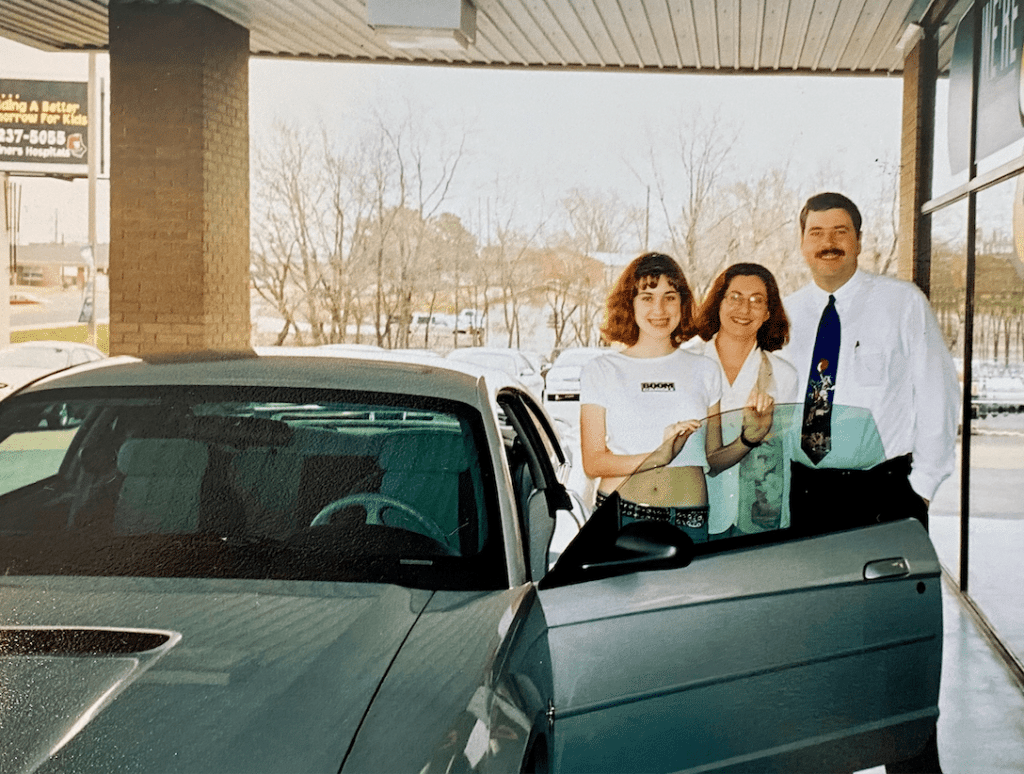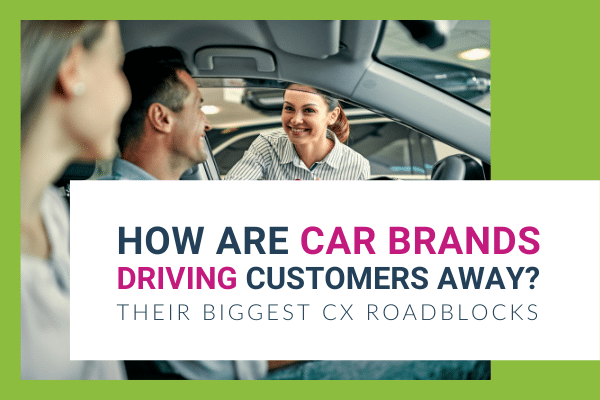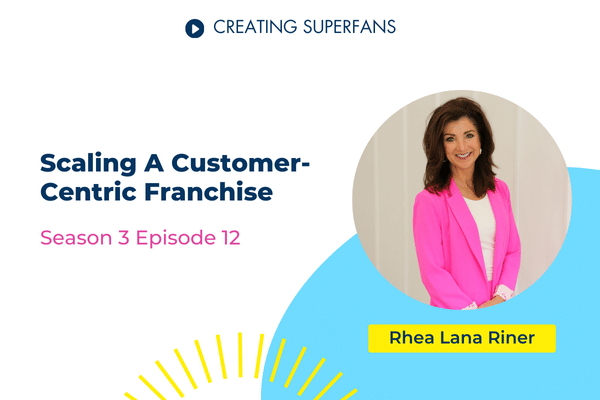MY CRASH COURSE IN CX
I was first introduced to the world of Customer Experience when my dad started working at a car dealership near my hometown of Roland, Oklahoma. During the summers as a teenager, I was working a dream job for the local radio station, attending concerts and interviewing artists for the station’s website. On my days off, my dad would often let me work with him in the customer service department at the dealership. What I didn’t know was that, decades later, I’d be combining the things I learned from both of these summer jobs into the foundation of my SUPERFANS System.
I vividly remember talking to my dad about one of his customer loyalty programs he implemented at the dealership: free oil changes for life. My dad had bought a special printer to create plastic membership cards for each new customer that they could flash every time they came in for an oil change. I loved printing out those plastic cards!
One day, when he told me oil changes cost about $30 before they started comping them (and that customers needed them 2-3 times a year!), I could not believe that my dad was willing to give all of that away for free! Wasn’t the dealership going to lose out on a ton of money?! I stopped printing immediately and tried to convince my dad this was an awful business idea.
My dad explained to me that, yes, in the short-term he would be losing money by offering free oil changes. However, he insisted that this new initiative was a long-term investment in his customers’ lifetime value.
His customers came back a few times each year to get their free oil changes, allowing the dealership the opportunity to maintain customer relationships, update their contact information, and inspect their vehicles to ensure they were running properly. When they did find issues to be repaired, customers were spending money with the dealership’s auto shop instead of taking their business elsewhere. And, when they were ready to buy their next car, they would likely come back to the dealership — after all, who would want to give up free oil changes? Plus, the cars they were trading in would be in great condition, since they had been regularly serviced, meaning there would be better used inventory for those cars’ next owners.
With that decision and so many others (including a genius marketing campaign that involved custom monthly postcard mailers, and the time my dad let me be in the dealership’s TV commercials which I hope to God aren’t on YouTube!), my dad helped me fall in love with customer experience before CX even had a name. In fact, one of the first CX books I read was Customers For Life: How to turn that one-time buyer into a lifetime customer by a visionary Cadillac dealership owner named Carl Sewell. The book is more than 30 years old, but it still stands up. Taking care of your customers: it’s both timely and timeless advice.
I’d love to know: Who had a huge role in shaping your love for customer centricity? Do you talk about them in your Origin Story?
What’s the “oil change” in your business model? What can you add that not only surprises or delights your customers, but also helps create the habit of getting them to come back for more? Even if you’re losing a bit of money on the front end, you will very likely make it back many times over in the repeat business and referrals you receive. The ROI on creating superfans will always be there — especially when you consider the fact that it costs several times more to attract a new customer than to sell something else to an existing one.

NO INDUSTRY IS IMPERVIOUS TO CX
Every now and then, people say things to me like, “Oh, I don’t have to worry about customer experience because everybody provides a terrible experience in my industry” or “CX is nice, but this is just the way things have always been done and they’re not going to change.”
Well, news flash: we are living in an experience economy. Customers are no longer comparing your brand’s experience to the other competitors in your industry. They are comparing your brand’s experience to every other experience they’ve ever had. Period. If someone isn’t doing a good enough job at providing an enjoyable experience for customers, someone else will come along and figure out how to make it enjoyable.
If Warby Parker can disrupt the vision industry by allowing me to check my prescription and pick out new lenses online, then I promise you, your industry is not “safe.” Customer expectations are at an all-time high, and they aren’t going to settle for anything less than the best. In fact, 86% of consumers are willing to pay more for a great customer experience.
BRAKING DOWN THE CURRENT CX PROBLEM IN THE AUTOMOTIVE INDUSTRY
A new Accenture report titled “A Customer Experience Reboot: Pivoting Toward the Automotive Industry’s Future Success” suggests that the automotive industry is facing challenges as customer expectations are drastically increasing.
In addition to vehicle performance, design, and price, customers want a more connected, virtual, and responsible experience. However, due to the disconnect between manufacturers and dealerships, automakers are providing a fragmented customer experience:
“While automotive executives are focused on future-related issues such as new energy vehicles, consumers are more concerned with practical, everyday considerations such as repairs and maintenance. What’s more, loyalty is at the bottom of priorities for both OEM executives and customers.”
The root of the problem is that the manufacturers are responsible for crafting the customer experience, but they don’t have direct access to, and thus data on, their customers. The dealerships are involved in about two-thirds of the overall customer journey, and yet they lack any real power in the process. The companies that fail to mend the dynamic will be steered in the wrong direction, since 47% of customers think about changing their automotive brand after a company fails to deliver a relevant customer experience.
According to the report, customers are experiencing low engagement and satisfaction particularly in the post-purchase phase, and 71% of respondents said they would increase their annual spend on aftersales if the experience improved. Without an optimized customer experience strategy, automakers are leaving money on the table at best or driving customers away at worst.
GETTING BACK ON TRACK
While many consultants can build and implement a data management system, it will take a complete shift in philosophy for car brands to become customer-centric. A General Manager at a major Japanese car manufacturer said, “Even if the data is there, nobody is working on the analytics. We are far behind … other industries. We produce hardware, and we don’t think about other things until much, much later.” Data is useless unless it’s actually being used. And if manufacturers don’t understand the importance of customer data and insights, then it’s far from a technological problem.
I always remind clients that everyone is in the experience department. Even if you’re only directly responsible for the pre-purchase phase of a car, you need to understand every part of the customer’s experience intimately. Customer centricity isn’t something that can just be dictated by the C Suite — it’s got to be instilled and enabled at every level of the organization.
Since strong EX is the key to great CX, car manufacturers must strive to keep all team members — whether they’re working on the production lines or at the dealerships — aligned, engaged, and properly enabled. If the salespeople are feeling confused by the processes set forth by the automakers, how do you think the customers feel? A fragmented EX will always equate to a fragmented CX.
The experience your customers have with your brand or business is the most important competitive advantage you have. It’s the hardest thing for competitors to steal because it’s baked into the DNA of your company.
Automakers and dealerships need to realign their roles, implement a streamlined data management system, and craft one overarching customer experience strategy if they want to compete in today’s experience economy.





